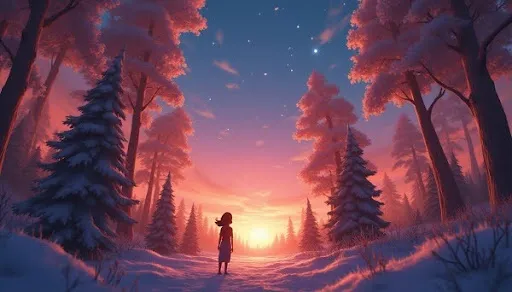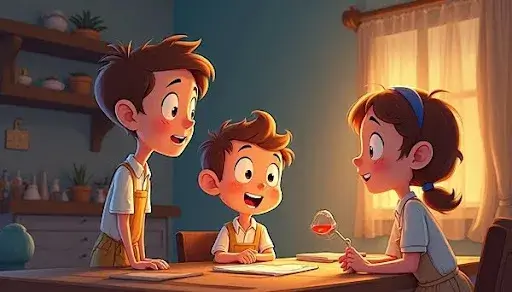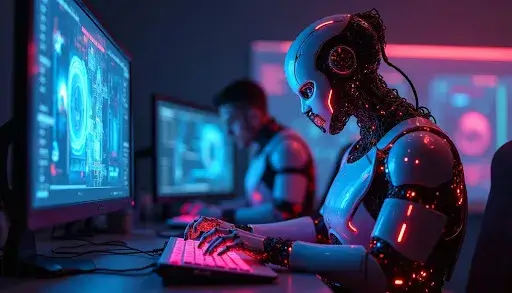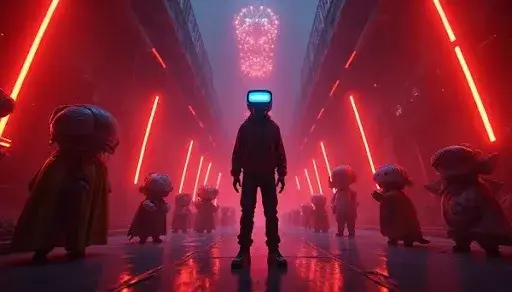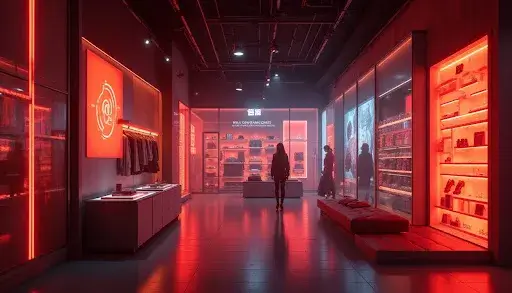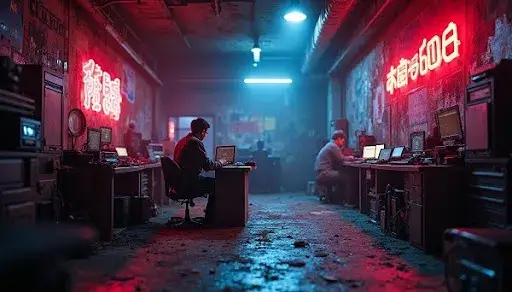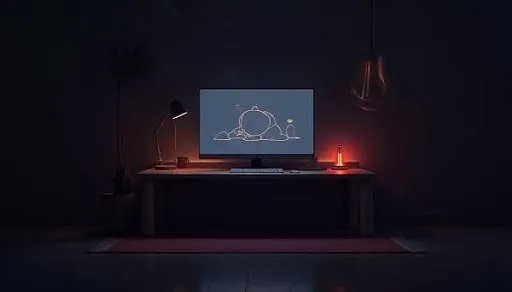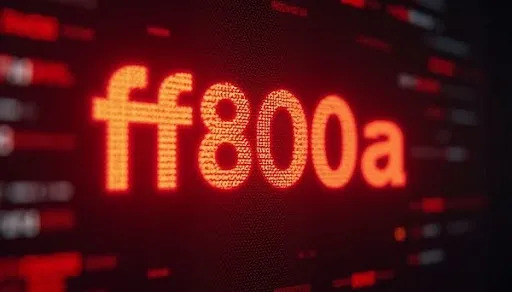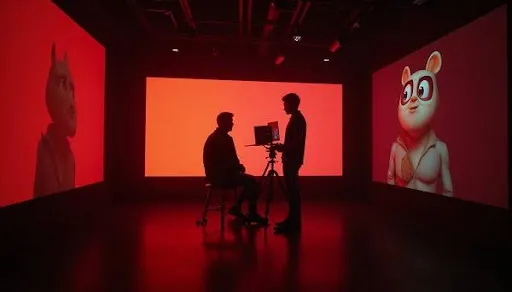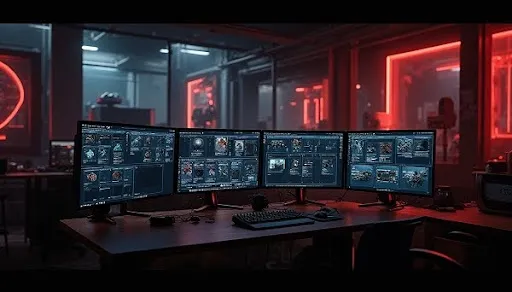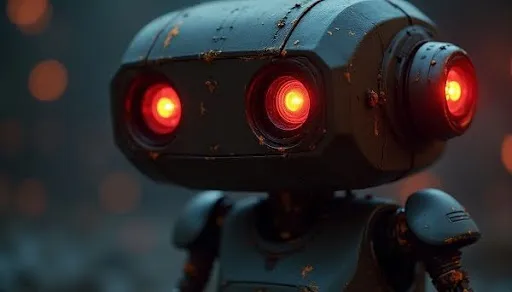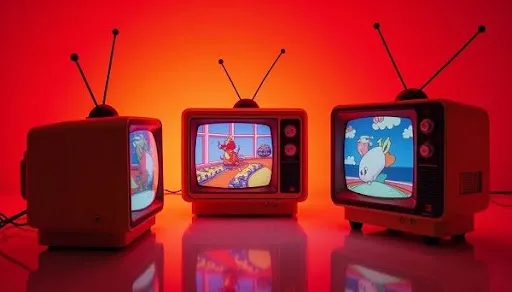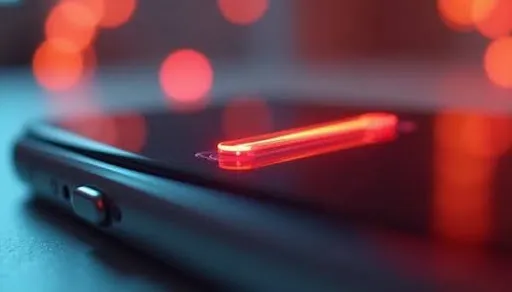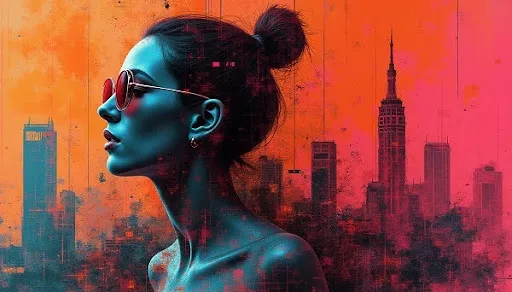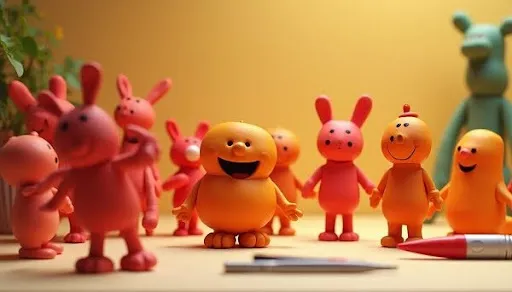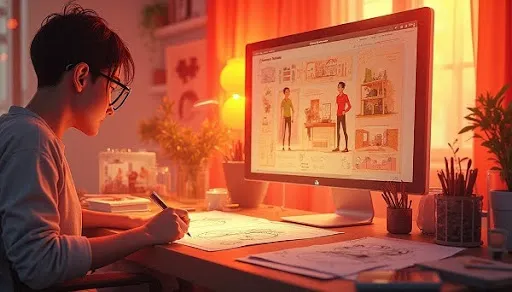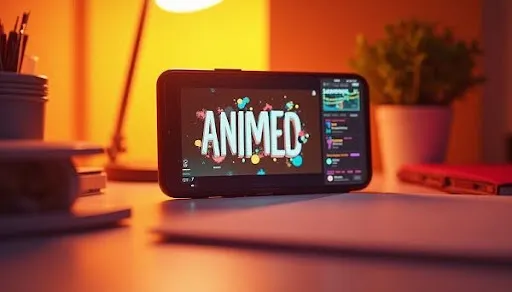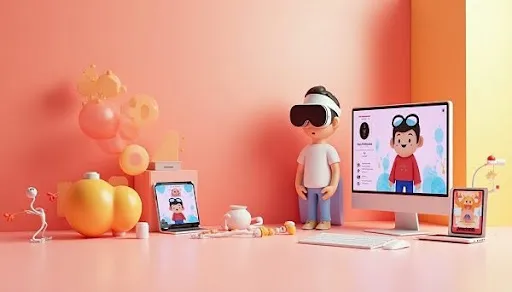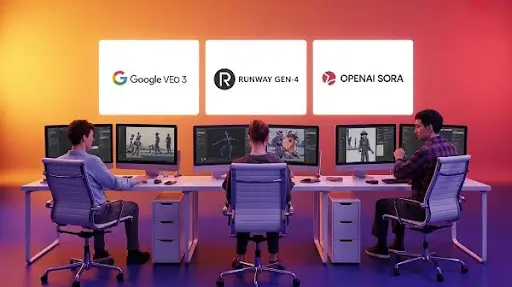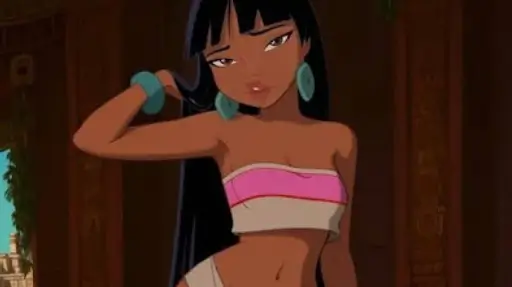Ever watched an animation so striking it felt alive? That’s no accident. Studios and solo animators are pushing limits in 2025, blending the old-school warmth of traditional animation with tomorrow’s tech.
If you’re hungry to see what’s cooking in the future of animation, buckle up; this year’s animation trends will reshape screens big and small.
Why Keeping Up With Animation Trends Matters
From indie animators to a large animation studio, nobody wants stale content. Viewers crave fresh. Brands need to be bold. Creators have to be faster and smarter with every frame.
Following the top animation trends isn’t just about what looks cool; it’s about staying relevant and profitable. Smart studios keep an eye on the future of animation and adapt before others catch on.
Hybrid 2D–3D Animation
The charm of 2D, combined with the realism of 3D, is back on every trend radar. Some call it the hybrid animation style, while others refer to it as Hybrid 2D–3D Animation; either way, it works. Titles like Spider-Verse and Arcane set the bar high.
In 2025, more studios are incorporating painterly textures, hand-drawn lines, and digital depth to create scenes that blur the distinction between flat and real.
How Hybrid Animation Style Works
- 2D outlines give scenes a nostalgic, handcrafted feel.
- 3D depth adds volume and motion.
- Smart shading tricks mimic real lighting.
- Motion blur and perspective hacks make hybrid shots feel dynamic.
When a large animation studio gets it right, audiences get hooked. This hybrid trend keeps storytelling in animation fresh without sacrificing classic skills.
AI-Assisted Animation
Love it or hate it, AI is in the studio. From facial rigs to entire scenes, AI-assisted animation is not science fiction anymore; it’s practical. What’s New in Animation? AI that handles tedious tasks and leaves humans to polish the magic.
Programs auto-fill in-between frames, fix lip syncs, and even suggest color palettes. Artists feed style samples into machine learning models that pump out frames matching the same vibe. Some call it cheating. Smart animators call it streamlining animation.
Pro tip: The best animators don’t let AI do all the work. They direct it like any other tool.
VR Animation
Virtual reality isn’t new. But VR animation in 2025 is finally hitting its stride. Headsets like Apple Vision Pro and Meta’s latest models have cracked comfort and clarity. That means more demand for fully animated VR films and experiences.
VR Animation forces artists to flip the script. You’re not framing for a static screen. Viewers stand inside your scene. The camera is their head. It changes how scenes are composed and how characters move. Good VR animation guides the eye without force. It’s part animation style, part spatial design.
AR Animation
If VR puts you inside the story, AR animation drops the story into your living room. Augmented reality continues to grow thanks to improved phones and apps that seamlessly blend animation with real life.
Adidas, IKEA, and countless big brands have already bet on AR to create interactive ads and pop-up characters that feel like they belong right next to you.
It’s not just advertising. Education, live performances, and museum exhibits are all experimenting with AR animation to surprise audiences and stand out. Oversized digital props, interactive mascots, playful filters, and the lines between screens and surroundings are gone.
Cross-Media Animation
One significant trend in the future of animation is cross-media animation. An animated character isn’t stuck in a movie anymore. It appears in social clips, VR experiences, AR stunts, short-form TikToks, and video games. The same animation style is applied across formats to tell a larger story.
This is huge for brands and big franchises. They get to build entire universes instead of a single piece of content. Creators who understand how to adapt different types of animation for each platform will stay busy and well paid.
Alternative Art
Feeling bored with squeaky-clean digital? So is everyone else. Alternative art styles are pushing against the glossy look. Think glitch loops, collages, painted textures, or motion that feels off on purpose.
This year, more experimental animators are drawing inspiration from street art, old comics, and classic stop-motion techniques.
This type of emerging visual styles trend attracts music videos, festival bumpers, or bold brand spots. It’s raw. It’s weird. It sticks in your head long after you scroll past.
Sustainable & Minimalist Animation
Animation doesn’t always need more layers and bigger effects. There’s a subtle shift toward sustainable and minimalist animation. Partly for style, partly for practicality. Big brands love minimalist explainer videos that convey a sense of calm and clarity. Viewers stay longer when scenes are uncluttered.
And there’s a green angle too. With fewer rendering hours, fewer heavy assets, and more modular animation workflows, the entire chain uses less energy and time. Good for the budget. Good for the planet. Even a large animation studio cares about efficiency when deadlines loom.
Read also:
Animated Typography
Animated typography isn’t new, but it remains a popular trend. From bold lyric videos to kinetic text in ads, moving words catch the eye faster than static ones. Subtle shifts, bouncing letters, text that morphs into shapes, there’s plenty of room for playful motion design.
Marketers love it. Viewers remember it. And with new AI-assisted animation tools, typography animations can be completed faster, freeing up teams for more ambitious projects.
Real-Time and Virtual Production
Remember when rendering an animated scene used to take hours? Real-time and virtual production is changing that. Using real-time engines (such as Unreal Engine), studios can tweak lighting, move assets, and see the results instantly. Directors and animators collaborate in real-time.
This trend is significant for hybrid projects that blend live-action with digital characters. TV shows, VFX-heavy films, and branded spots all benefit from faster turnaround and more flexibility.
Modular Animation Workflows
The more complex the animation gets, the more it needs clear workflows. Modular animation workflows break projects into reusable parts: rigs, textures, and motion libraries. Teams swap pieces in and out without having to start over.
For big series or a large animation studio with multiple animators, modular setups speed up production. It’s like building with LEGO instead of carving a statue from scratch every time.
Anthropomorphic Animation
If you’ve noticed more robots, mascots, and creatures looking suspiciously emotional lately, you’re seeing anthropomorphic animation in action.
Studios love giving non-human characters real feelings and complex expressions. It’s a storytelling trend in animation that won’t fade, as audiences connect deeply when characters exhibit human quirks.
AI-assisted animation tools make it even easier to nail subtle facial movements or believable eye contact. The payoff? Characters that feel alive and stories that resonate more deeply.
Collage Animation
Collage animation stands out when every other feed is full of glossy 3D. It stitches together photos, paper textures, scribbles, and rough cuts to make scenes that feel tactile and raw. Music videos, art films, and experimental ads thrive on this messy aesthetic.
Creators utilize various types of animation to piece together frames by hand or combine them with digital tools. The result appears crafted, rather than mass-produced, making it perfect for brands or artists who want to stand out in a sea of polish.
Alternative Simulation and Oddly Satisfying Loops
People can’t stop watching loops of paint swirling, gooey blobs morphing, or perfect cubes bouncing forever, and oddly satisfying animation pairs with simulation tools to blend art and physics. These micro-scenes show gravity, fluid flow, or soft-body dynamics in hypnotic ways.
Brands sneak them into social ads, meditation apps, or live event visuals because viewers tend to stare longer and remember them longer. A large animation studio might pour days into perfect loops just to keep you watching that one moment on repeat.
Vintage and Retro Styles
Classic never dies, it just updates. The retro animation trend borrows from old TV aesthetics, VHS flickers, and 80s film grain. Pair it with the future of animation tech, and you get a vibe that feels nostalgic yet crisp.
Popular uses? Lyric videos, music visuals, game intros. Animators replicate the old cel shading and traditional animation frame rates, but refine them with modern software. When done right, it appeals to both older audiences craving memories and younger ones seeking something different.
Micro-Animations for Digital Products
Not every trend is big-screen flashy. Some work best in your pocket. Micro-animations are tiny motion elements inside apps, websites, or smart devices. They guide the eye, show progress, or confirm an action.
Tap a button, and it wiggles. Wait for a screen, watch a fun loader. These subtle touches make digital spaces feel alive. Good micro-animations follow storytelling in animation rules, too: there’s an action, a payoff, and a clear next step.
Emerging Visual Styles
Trends come alive when artists experiment. Currently, the hottest emerging visual styles combine glitch art, vaporwave palettes, brutalist shapes, or surreal cutouts. These styles rarely look “clean.” They grab your eye because they don’t try to be perfect.
Expect to see them in indie films, music videos, and branded shorts that require a rebellious edge. As AI-assisted animation makes standard shots faster, more animators have time to get creative, and creativity sells.
Claymation: Old Hands, New Tools
Claymation’s handmade vibe beats sterile digital scenes every time. In 2025, modern rigs and 3D printing breathe new life into stop-motion classics. Directors combine old-school clay models with digital touch-ups to achieve smooth shots that retain their organic feel.
This hybrid approach keeps clay relevant for short films, quirky ads, or heartfelt kids’ content. Nothing beats the charm of seeing fingerprints on a character’s face.
You may also like: What is the Cost of Animation Video Per Minute?
How Animation Outsourcing Stays Relevant
Not every studio can master every trend alone. Animation outsourcing remains a smart business strategy, especially for small teams tackling large projects. A large animation studio might hire niche freelancers for complex 3D rigs or tricky VR animation sequences. Indie creators outsource the final polish or use AI tools they don’t have in-house.
Outsourcing keeps workflows lean, projects fresh, and costs predictable. It’s less about cutting corners and more about tapping global talent for different types of animation needs.
Storytelling Still Runs the Show
Trends help, but storytelling in animation makes it stick. Good stories beat fancy effects every time. Hybrid 2D–3D animation? Great, but if your story’s flat, it flops. VR animation? Fun, but aimless worlds bore fast.
The real lesson: trends come and go. Storytelling skills keep careers alive.
Animation Trends Every Creative Should Watch
Here’s a no-fluff list for busy creatives and studio teams:
- Hybrid 2D–3D animation for a unique style.
- AI-assisted animation works faster.
- VR and AR animation for immersive moments.
- Cross-media animation for bigger reach.
- Sustainable & minimalist animation to stay efficient.
- Emerging visual styles for eye-grabbing originality.
- Claymation and retro for handmade warmth.
- Micro-animations and real-time animation for tech-forward needs.
- Modular animation workflows and smart outsourcing to keep costs sane.
Bookmark these. Share them. Build on them.
Tools That Change the Game
It’s not just about what you draw anymore; it’s how you build. The future of animation demands tools that merge craft with speed. Blender, Toon Boom, Unreal Engine, and AI-assisted plugins now enable teams of any scale to create large, layered scenes without compromising deadlines.
This tech empowers creators to test different types of animation without restarting projects. Want to test a hybrid animation style, then pivot to collage animation in the same scene? Modular animation workflows and real-time rendering allow that flexibility.
Why Tech Matters for Animation Trends
- It speeds up revisions while protecting style.
- It allows multiple artists to work on the same sequence seamlessly.
- It reduces rendering wait times, giving more breathing room for polish.
- It makes advanced animation outsourcing smoother for distributed teams.
Storytelling in Animation Is Getting Personal
Clients and audiences don’t just want pretty motion. They want stories that connect. Storytelling in animation is evolving beyond classic hero arcs or brand taglines. Creators are bringing personal experiences, social commentary, and emotional depth to even the shortest explainer video.
Animation trends to watch include micro-narratives in 15-second loops and layered emotional arcs in AR animation activations. Even “oddly satisfying animations” can carry subtle stories if creators add small moments of surprise or emotional cues.
Social-First Animation
Animation content now lives on TikTok, Instagram Reels, YouTube Shorts, and Snapchat, not just TV or theaters. Social-first animation needs to grab attention in under 2 seconds, loop seamlessly, and remain recognizable on small screens.
Creators use kinetic typography, animated stickers, quick character loops, and hybrid 2D–3D animation to build bite-sized, shareable stories. This isn’t about cutting corners. It’s about understanding how audiences consume content today.
Cross-Media Animation Is the New IP Strategy
Want to build a character brand? You’ll need a cross-media animation strategy. A single character might appear in a VR animation experience, an AR Instagram filter, a music video cameo, and a looping GIF series.
This approach maximizes ROI for creators and studios. You build once, export to many platforms, and let audiences interact across touchpoints. It’s how creators shift from a single project to an ecosystem, and it’s working.
What’s New in Animation Education
More creators are opting to skip film school in favor of online learning. Platforms like School of Motion and Blender’s open courses help animators learn AI-assisted animation, advanced 3D rigs, or real-time pipelines fast.
This democratization means fresh talent enters the market regularly. Staying competitive means learning continuously, testing emerging visual styles, and pushing skills beyond your comfort zone.
Sustainable Animation
Animation studios are reevaluating their resource allocation. Long render times drain power. Heavy file sizes slow cloud collaboration. Sustainable and minimalist animation practices enable studios to stay efficient while minimizing their environmental impact.
Simple practices:
- Use lower frame rates when appropriate.
- Optimize scenes for render efficiency.
- Apply minimalist design when the story allows.
- Streamline workflows to reduce revision cycles.
Brands appreciate this angle, and so does your utility bill.
What to Watch Beyond 2025
We’re seeing signs of new trends ready to surface:
- AI-generated styles unique to each user: Personalized experiences will become standard.
- Real-time performance capture for animated influencers and virtual hosts.
- Crowdsourced animation projects using modular workflows.
- Deeper AR integration for retail, education, and live events.
- Haptic VR animation adding touch to immersive experiences.
Stay curious, stay adaptable, and these trends will become opportunities.
Final Words
Animation isn’t slowing down. Demand is everywhere, from startups needing reels to big brands betting on AR and VR animation. The 2025 animation trends are your chance to evolve your content, sharpen your skills, and position your studio or freelance work ahead of competitors.
At Prolific Studio, we believe in animation that connects, sells, and inspires. Our team blends the artistry of traditional animation with the technical edge of AI-assisted workflows, hybrid 2D–3D animation, and VR-ready content pipelines.
If you want animation that not only looks beautiful but also moves your audience to take action, let’s talk. Reach out today, and let’s shape your story using the animation trends that matter.
FAQs
Q: What’s the biggest animation trend to watch right now?
Hybrid 2D–3D animation continues to lead, blending emotional depth with modern visuals.
Q: Is VR animation worth investing in for brands?
Yes. VR animation allows brands to create immersive experiences, increasing engagement and memorability.
Q: How can small studios keep up with these trends?
By using AI-assisted tools, modular workflows, and targeted animation outsourcing, even small teams can produce high-quality content efficiently.
Q: Why are oddly satisfying animations still popular?
They hold attention longer, create repeat views, and evoke a calming emotional response, making them effective for engagement.
Q: How do I choose the right animation style for my project?
Consider your audience, platform, and goals. Minimalist styles suit explainer videos, while emerging visual styles attract younger audiences on social.

